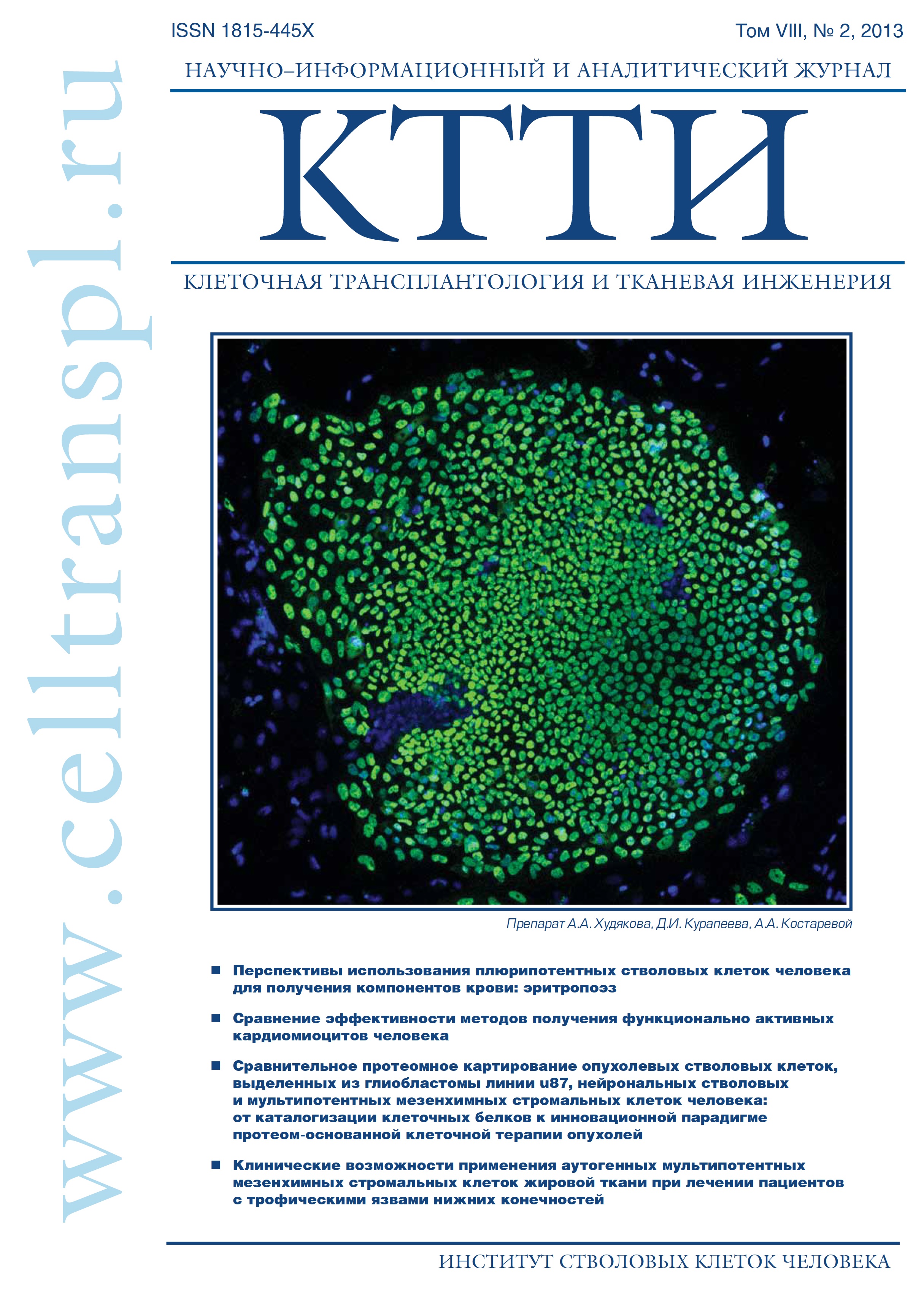The study of migration of the multipotent mesenchymal stromal cells in the body of animal with a tumor
- Authors: Meleshina A.V1, Cherkasov E.I1, Sergeeva E.A2, Shirmanova M.V3, Balalaeva I.V2, Kiseleva E.V4, Zayganova E.V3
-
Affiliations:
- Nizhny Novgorod State University, Nizhny Novgorod
- Institute of Applied Physics of Russian Academy of Science, Nizhny Novgorod
- Nizhny Novgorod State Medical Academy, Nizhny Novgorod
- N.K. Koltzov Institute of Developmental Biology of RAS, Moscow
- Issue: Vol 8, No 2 (2013)
- Pages: 56-63
- Section: Articles
- URL: https://genescells.ru/2313-1829/article/view/121608
- DOI: https://doi.org/10.23868/gc121608
- ID: 121608
Cite item
Abstract
Full Text
About the authors
A. V Meleshina
Nizhny Novgorod State University, Nizhny Novgorod
E. I Cherkasov
Nizhny Novgorod State University, Nizhny Novgorod
E. A Sergeeva
Institute of Applied Physics of Russian Academy of Science, Nizhny Novgorod
M. V Shirmanova
Nizhny Novgorod State Medical Academy, Nizhny Novgorod
I. V Balalaeva
Institute of Applied Physics of Russian Academy of Science, Nizhny Novgorod
E. V Kiseleva
N.K. Koltzov Institute of Developmental Biology of RAS, Moscow
E. V Zayganova
Nizhny Novgorod State Medical Academy, Nizhny Novgorod
References
- Nolan D.J., Ciarrocchi A., Mellick A. S. Bone marrow-derived endothelial progenitor cells are a major determinant of nascent tumor neovascularization. Gen. Dev. 2007; 21:1546-58.
- Shen J., Tsai Y.-T., DiMarco N.M. Transplantation of mesenchymal stem cells from young donors delays aging in mice. Scientific reports 2011; 67 (1):1 —7.
- Генин А.М., Капланский А.С. Биоэтические правила проведения исследований на человеке и животных в авиационной, космической и морской медицине. Авиационная и экологическая медицина 2001; 4:14-20.
- Evrogen Joint Stock Company. Basic fluorescent proteins, http://www.evrogen.ru/products/TagGFP2/TagGFP2.shtml.
- Мелешина А.В., Черкасова Е.И., Сергеева Е.А. Исследование взаимодействия мезенхимных стволовых клеток и опухоли методами флюоресцентного биоимиджинга. Современные технологии в медицине 2012; 4:7-16.
- Wolf D., Rumpold H., Koeck R. Mesenchymal stem cells: potential precursors for tumor stroma and targeted delivery vehicles for anticancer agents. J. Nation. Cancer Inst. 2005; 97t7):540-2.
- Bell E.L., Klimova T.A., Eisenbart J. Mitochondrial reactive oxygen species trigger hypoxia inducible factor dependent extension of the replicative life span during hypoxia. Mol. Cell Biol. 2007; 27:5737-45.
- Wang H., Cao F., De A. Trafficking mesenchymal stem cell engraftment and differentiation in tumor-bearing mice by bioluminescence imaging. Stem cells 2009; 27:1548-58.
- Spaeth E. L., Dembinski L., Sasser A.K. Mesenchymal stem cell transition to tumor-associated fibroblasts contributes to fibrovascular network expansion and tumor progression. Plos One 2009; 4:1-11.
- Kidd S., Spaeth E., Dembinski J. L. Direct evidence of mesenchymal stem cell tropism for tumor and wounding microenvironments using in vivo bioluminescent imaging. Stem Cells 2009; 27:2614-23
- Cheng L., Hammond H., Ye Z. Human adult marrow cells support prolonged expansion of human embryonic stem cells in culture. Stem Cells 2003; 21(2):131-42.
- Пыко И.В., Корень С.В., Квачева З.Б. Мезенхимальные стволовые клетки костного мозга: свойства, функции, возможность использования в регенеративной и восстановительной терапии. Мед. Журн. 2007; 4:18-22.
- Ren C., Kumar S., Chanda D. Therapeutic potential of mesenchymal stem cells producing interferon-alpha in a mouse melanoma lung metastasis model. Stem Cells 2008; 26:2332-8.
- Komarova S., Kawakami Y., Stoff-Khalili M.A. Mesenchymal progenitor cells as cellular vehicles for delivery of oncolytic adenoviruses. Mol. Cancer Ther. 2006; 5:755-66.
- Karnoub A.E., Dash A.B., Vo A.P. Mesenchymal stem cells within tumor stroma promote breast cancer metastasis. Nature 2007; 449:557-63.
- Niess H., Bao Q., Conrad C. Selective targeting of genetically engineered mesenchymal stem cells to tumor stroma microenvironments using tissuespecific suicide gene expression suppresses growth of hepatocellular carcinoma. Ann. Surg. 2011; 254:767-74.
- Cuiffo B.G., Karnoub A.E. Mesenchymal stem cells in tumor development. Emerging roles and concepts. Cell Adhes. Migrat. 2012; 6(3):220-30.
- Furia L., Cicalese A., Rancati I. et al. Stem Cell Biology in Cancer Research. A New Challenge for Fluorescence Microscopy, http://www. leica-microsystems.com/science-lab/stem-cell-biology-in-cancer-research/.
- Hogan C., Dupre-Crochet S., Norman M. Characterization of the interface between normal and transformed epithelial cells. Nat. Cell Biol. 2009; 11(4):460-7.
- Saton A., Saito T., Sato Y. et al. Traffic of infused bone marrow cells after genetically labeled syngeneic bone marrow transplantation following lethal irradiation in mice. Fukushima J. Med. Sci. 2008; 54(1):11-24.
Supplementary files










